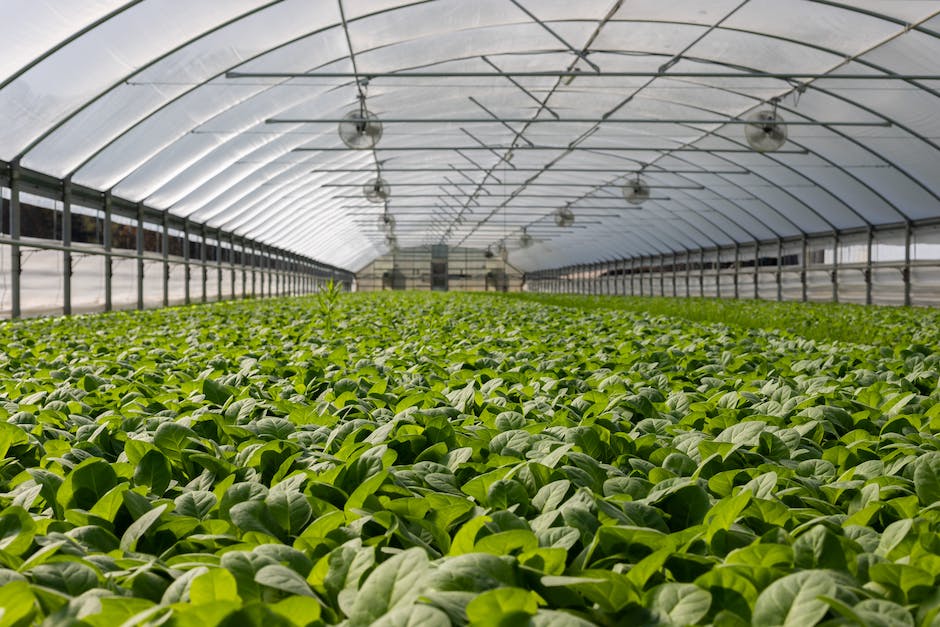What Can U Grow In Hydroponics
Hydroponics, the soilless method of growing plants, has gained significant popularity in recent years. This innovative technique involves cultivating plants in nutrient-rich water solutions, allowing them to thrive without the need for traditional soil. While hydroponics may still be relatively new to some, its benefits and potential are truly remarkable.
Hydroponics offers several advantages over traditional soil-based farming. First and foremost, it allows for more efficient use of resources. In a hydroponic system, water and nutrients are carefully controlled and recirculated, significantly reducing water wastage compared to conventional agriculture. This makes hydroponics an environmentally friendly option, particularly in regions facing water scarcity or where arable land is limited.
Additionally, hydroponics enables year-round cultivation, irrespective of external conditions such as weather or soil quality. As a result, farmers and gardeners can grow crops consistently throughout the year, providing a steady supply of fresh produce. Moreover, hydroponics offers the freedom to grow plants in urban areas and other non-traditional farming spaces, making it an ideal solution for those looking to cultivate crops in limited spaces or underutilized buildings.
The versatility of hydroponics extends to the wide variety of plants that can be grown using this method. While some may assume that only certain types of crops can thrive without soil, the reality is quite the opposite. Hydroponics can support the growth of almost any plant species, including leafy greens, herbs, fruits, and even flowering plants. From lettuce and tomatoes to strawberries and basil, hydroponics can accommodate a diverse range of crops, allowing for an extensive selection of fresh, homegrown produce.
Not only does hydroponics provide the opportunity to grow a wide array of crops, but it also promotes faster growth rates and higher yields. With the precise control over nutrient delivery and environmental conditions, plants in hydroponic systems can grow up to 25% faster than their soil-based counterparts. Additionally, studies have shown that hydroponics often produces higher crop yields compared to traditional farming methods. This increased productivity makes hydroponics an attractive option for commercial farmers and individuals seeking efficient and productive gardening solutions.
In conclusion, hydroponics offers a sustainable, versatile, and high-yield alternative to traditional soil-based farming. The ability to grow various crops in a controlled environment, regardless of external factors, makes hydroponics an excellent choice for both commercial and home gardening. Whether you are interested in cultivating a small herb garden or growing a significant amount of fresh produce, hydroponics provides a solution that is not only efficient but also environmentally friendly. Stay tuned as we explore the practical applications of hydroponics and delve into the specific crops that thrive in this innovative growing method.
A. Definition of hydroponics

Hydroponics is a method of growing plants without soil. Instead, it relies on a nutrient-rich water solution to deliver essential elements directly to the plant’s roots. This form of cultivation can be done in various systems, such as using tanks, trays, or tubes, where the plant’s roots are either suspended in the water or housed in an inert medium like perlite, coconut coir, or rockwool.
By eliminating the need for soil, hydroponics allows for precise control over the plant’s environment, including nutrient levels, pH balance, and water availability. This level of control not only ensures optimal plant growth but also reduces the risk of diseases, pests, and weeds commonly associated with traditional soil-based farming.
Hydroponics offers several advantages over conventional farming methods. Firstly, it allows for year-round cultivation, making it possible to grow crops regardless of seasonal limitations. Additionally, hydroponics uses significantly less water compared to traditional agricultural practices, making it an environmentally sustainable choice. Moreover, this method eliminates the need for herbicides and pesticides, promoting healthier produce and reducing chemical runoff into water sources.
This farming technique is not limited to a specific type of plant, as various crops can thrive in hydroponic systems. Leafy greens like lettuce, spinach, and kale can easily be grown in hydroponic setups. Furthermore, fruiting plants such as strawberries, tomatoes, peppers, and cucumbers have also shown excellent growth and productivity in hydroponics. Even herbs and culinary plants like basil, mint, and parsley can flourish in this soil-less environment.
In conclusion, hydroponics provides a modern and efficient way to cultivate a wide range of plants, offering numerous advantages over traditional farming. By embracing this innovative technique, businesses can explore sustainable and reliable alternatives for growing fresh, high-quality produce all year round.
B. Growing popularity of hydroponic systems

Hydroponic systems have been rapidly gaining popularity in recent years, revolutionizing the way we grow plants. This innovative method of cultivation has attracted a significant following, particularly in the professional and commercial agriculture sectors. The increasing interest in hydroponics can be attributed to several key factors.
Firstly, hydroponic systems offer a more efficient use of resources compared to traditional soil-based farming. By providing plants with precisely measured amounts of water, nutrients, and oxygen, hydroponics allows for optimal growth and eliminates the need for excessive use of fertilizers, pesticides, and water. This controlled environment not only maximizes crop yield but also reduces the environmental impact associated with conventional farming techniques.
Secondly, the ability to grow plants without soil provides greater flexibility in terms of location and space utilization. Hydroponics systems can be set up in urban areas, rooftops, or even indoors, allowing farmers to cultivate crops all year round regardless of climate conditions. This versatility has opened up new possibilities for urban farming initiatives and has made fresh, locally grown produce more accessible to consumers, further driving the demand for hydroponically grown products.
Furthermore, hydroponics enables farmers to achieve faster growth rates and higher crop yields compared to traditional farming methods. The controlled environment, combined with the optimized nutrient delivery system, allows plants to focus their energy on growth rather than searching for nutrients in the soil. As a result, hydroponic plants tend to grow faster, healthier, and produce larger yields in a shorter span of time.
In addition, the consistent and predictable nature of hydroponics makes it an attractive option for commercial farmers. The precise control of environmental variables such as light, temperature, and nutrient levels ensures consistent crop quality and helps meet the stringent demands of the professional marketplace. Hydroponics systems also facilitate easier monitoring and automation of the cultivation process, reducing labor requirements and allowing for efficient scaling of operations.
Overall, the growing popularity of hydroponic systems can be attributed to their numerous advantages over traditional soil-based farming. From resource efficiency and location flexibility to faster growth rates and higher crop yields, hydroponics offers a promising solution to the challenges faced by the modern agricultural industry. As this technology continues to evolve and improve, it holds great potential for shaping the future of sustainable and productive food production.
List of 10 plants you can grow in hydroponics:

Here’s a section for the blog post:
Hydroponics is a versatile method of growing plants without soil, allowing individuals to cultivate a wide range of crops in a controlled indoor environment. Whether you’re a seasoned gardener or just starting your hydroponic journey, here are ten plants that thrive in hydroponic systems:
1. Leafy Greens: Lettuce, spinach, kale, and other leafy greens grow exceptionally well in hydroponics. They require limited space, are quick to mature, and can provide a constant supply of fresh, nutrient-packed leaves.
2. Herbs: Basil, mint, parsley, and cilantro are commonly grown herbs in hydroponic setups. They require minimal maintenance, have a fast growth rate, and add a burst of flavor to your culinary creations.
3. Tomatoes: Delicious and versatile, tomatoes are one of the most popular crops in hydroponics. Their abundant growth, compact size, and high yield make them an excellent choice for hydroponic gardening.
4. Cucumbers: Cucumbers thrive in hydroponic systems, producing crisp, refreshing fruits. With proper support, they can grow vertically, saving space while ensuring optimal growth and harvest.
5. Peppers: Whether it’s bell peppers or spicy chili varieties, peppers can flourish in hydroponic environments. They enjoy the consistent watering and nutrient-rich solutions provided by hydroponic systems.
6. Strawberries: Growing strawberries hydroponically allows for superior control over their environment, resulting in sweeter, plumper berries. Their compact size and ability to thrive in hanging baskets make them a perfect choice for hydroponics.
7. Microgreens: Microgreens, such as broccoli, radish, and sunflower shoots, are becoming increasingly popular in hydroponics. These nutrient-dense young plants are packed with flavor and add a gourmet touch to meals.
8. Green Beans: Suitable for larger hydroponic setups, green beans can climb trellises or grow in bush-like structures, providing a plentiful harvest. They are a great option for those looking to grow legumes in a hydroponic system.
9. Strawberries: Growing strawberries hydroponically allows for superior control over their environment, resulting in sweeter, plumper berries. Their compact size and ability to thrive in hanging baskets make them a perfect choice for hydroponics.
10. Radishes: Radishes are quick-growing root vegetables that can be easily cultivated hydroponically. They offer a crunchy, peppery taste and can be ready for harvest in as little as three weeks.
Remember, the success of growing plants in hydroponics relies on maintaining the proper nutrient balance, temperature, light exposure, and pH levels tailored to each specific plant’s needs. With the right approach and careful attention, you can enjoy a flourishing hydroponic garden, yielding fresh produce throughout the year.
1. Leafy Greens (e.g., lettuce, spinach)

Leafy Greens (e.g., lettuce, spinach):
One of the most popular and successful crops to grow in hydroponics systems is leafy greens. This category includes various types of lettuce, spinach, kale, arugula, and many others. With hydroponics, you can provide these greens with the perfect balance of nutrients, water, and light, resulting in healthy and vibrant plants.
Leafy greens are well-suited for hydroponics because they have shallow root systems and grow relatively quickly. This allows them to efficiently absorb nutrients and water from the liquid solution in the hydroponic system. Additionally, they are highly versatile and can be grown throughout the year in controlled indoor environments.
Hydroponically grown leafy greens often have several advantages over conventionally grown ones. As the roots are constantly supplied with the necessary nutrients, the plants can grow faster and produce higher yields compared to traditional soil-based cultivation. By eliminating the need for soil, hydroponics also reduces the risk of soil-borne diseases and pests that can harm the crop.
The controlled environment in hydroponics systems allows for optimal growth conditions, resulting in consistent leaf shapes, colors, and textures. This uniformity is particularly desirable for commercial growers who need to provide consistently high-quality produce to meet market demands.
Furthermore, hydroponics systems enable growers to conserve water by recycling and reusing the nutrient-rich solution used to nourish the plants. This sustainable approach not only reduces water consumption but also minimizes the risk of nutrient runoff that can harm the environment.
Whether you’re looking to start a small indoor garden or are interested in large-scale commercial production, leafy greens are an excellent choice for hydroponics. By utilizing this innovative growing method, you can enjoy a bountiful harvest of crisp, fresh, and nutrient-rich greens all year round.
In our next section, we will explore another category of crops that thrive in hydroponics: Herbs. Stay tuned to learn more about the advantages of growing herbs hydroponically and the specific varieties that are highly suited for this method.
2. Herbs (e.g., basil, thyme)

Herbs are a fantastic choice to grow in hydroponics due to their compact size and quick growth cycle. Basil and thyme, in particular, are popular options that thrive in a hydroponic environment.
Basil is a versatile herb with a rich aroma and distinct flavor. It grows exceptionally well in hydroponics, producing vibrant green leaves that are perfect for adding freshness to various culinary creations. Hydroponic basil plants can be grown year-round, ensuring a steady supply of this popular herb regardless of the season. With regular pruning, basil plants can be kept compact, making them ideal for smaller hydroponic systems.
Thyme is another herb that thrives in a hydroponic setup. Known for its strong aromatic qualities, thyme is a staple in many cuisines around the world. Growing thyme hydroponically ensures consistent and robust growth, resulting in flavorful leaves that can elevate the taste of any dish. This herb requires minimal care and adapts well to different hydroponic systems, making it a hassle-free option for both home gardeners and commercial hydroponic growers.
The controlled environment provided by hydroponics enables herbs like basil and thyme to flourish without the challenges of traditional soil-based gardening. By eliminating the dependency on soil, hydroponics ensures optimal nutrient uptake and water absorption, allowing these herbs to reach their full potential.
In addition to their culinary applications, both basil and thyme have medicinal properties and are often used in herbal remedies. Growing them in a hydroponic system ensures a higher concentration of beneficial compounds, enhancing their therapeutic value.
Whether you are an avid cook looking to have fresh herbs at your fingertips or a commercial grower seeking a profitable herb crop, growing basil and thyme in hydroponics can offer an array of benefits. With proper attention to lighting, temperature, nutrient balance, and pruning, you can enjoy a bountiful harvest of these flavorful herbs throughout the year.
3. Tomatoes

Tomatoes are one of the most popular and versatile crops that can be grown using hydroponics. With the right setup and techniques, hydroponic tomato plants can thrive and produce high yields, making them a favorite choice for many hydroponic growers.
One of the key advantages of growing tomatoes in a hydroponic system is the ability to control and optimize the growing environment. This control allows for consistent growth and development throughout the entire plant’s life cycle. Hydroponic tomatoes can be grown year-round, providing a reliable supply of fresh, juicy tomatoes regardless of the season.
In a hydroponic system, tomatoes are typically grown using a nutrient-rich water solution instead of traditional soil. This eliminates the risk of soil-borne diseases and pests, creating a cleaner and healthier growing environment. Additionally, the constant availability of nutrients and water in hydroponics helps tomato plants grow faster and produce stronger, more flavorful fruits.
One popular method for growing hydroponic tomatoes is the nutrient film technique (NFT) system. In this system, tomato plants are placed in narrow channels or gutters, and a continuous flow of nutrient-rich water is circulated around the roots of the plants. This allows the roots to access the necessary nutrients while also providing oxygen for proper growth.
Another technique commonly used for hydroponic tomatoes is the drip irrigation system. This system involves providing water and nutrients to the plants through a series of tubes with emitters, which effectively deliver the required resources directly to each plant’s root zone. This method is highly efficient and allows for precise control over the amount and frequency of water and nutrients delivered to the tomato plants.
When it comes to choosing the right tomato variety for hydroponic cultivation, determinate varieties are often preferred. Determinate tomatoes are compact and bushy, making them suitable for confined hydroponic growing spaces. Popular determinate tomato varieties for hydroponics include Celebrity, Roma, and Floradade.
To maximize the yield and quality of hydroponic tomatoes, proper pruning and training techniques should be employed. Regularly removing suckers (side shoots that emerge from the leaf axils) helps divert the plant’s energy into fruit production rather than excessive foliage growth. Additionally, using trellises or stakes to support the plants’ main stems allows for better air circulation and reduces the risk of diseases.
In conclusion, hydroponics offers an excellent opportunity for growing tomatoes efficiently and consistently. With the ability to create an ideal growing environment and maximize nutrient delivery, hydroponic tomato plants thrive and produce abundant, flavorful fruits. Whether you are a small-scale hobbyist or a commercial grower, hydroponic tomatoes provide a reliable source of fresh produce throughout the year.
4. Cucumbers

Cucumbers are a versatile and popular choice for hydroponic gardening. With their crisp texture and refreshing taste, cucumbers thrive in controlled environments where their growth can be closely monitored and optimized.
One of the significant advantages of growing cucumbers hydroponically is the ability to provide them with the ideal conditions for growth, resulting in higher yields and more consistent quality. Since hydroponic systems deliver a balanced nutrient solution directly to the plant roots, cucumbers have access to all the essential elements they need to thrive.
In traditional soil-based cultivation, cucumbers can sprawl and occupy a considerable amount of space. However, in a hydroponic setup, vertical growing techniques can be employed, maximizing space utilization. This makes cucumbers an excellent option for small-scale hydroponic setups or even commercial vertical farm operations.
Varieties such as English cucumbers, which are often long and slender, are particularly well-suited for hydroponic cultivation. These varieties tend to have fewer seeds and a milder flavor, making them highly sought after in the market.
Maintaining the proper environmental conditions is crucial for successful cucumber growth in hydroponics. Cucumbers prefer slightly higher temperatures, ideally between 75-85°F (24-29°C), with humidity levels around 60-70%. Adequate ventilation and air circulation are essential to prevent diseases and ensure optimal plant health.
Cucumber plants need support for their vines to climb and spread. Trellising or using vertical support structures can prevent the plants from becoming tangled and allows for better air circulation.
Regular monitoring and management of the hydroponic system are vital to avoid nutrient deficiencies or imbalances that could hinder cucumber development. Maintaining the correct pH level and regularly testing the nutrient solution are crucial to ensure optimal plant growth.
Harvesting cucumbers from a hydroponic system can be a continuous and rewarding process. As you pick mature cucumbers, new ones will continue to grow and replace them. With proper care and attention, a hydroponic cucumber plant can produce an abundant harvest throughout the growing season.
Whether you’re a hobbyist or a commercial grower, cucumbers are an excellent choice for hydroponic cultivation. Their adaptability, high yields, and delicious flavor make them a rewarding addition to any hydroponic garden. Don’t hesitate to give hydroponic cucumbers a try and enjoy the taste of fresh, homegrown produce all year round.
5. Peppers

Peppers are a versatile and popular choice for hydroponic cultivation. With their vibrant colors, distinct flavors, and nutritional benefits, they are widely used in various culinary dishes. Hydroponics provides an efficient and controlled environment for pepper plants to thrive, resulting in high-quality yields.
One of the key advantages of growing peppers hydroponically is the ability to create optimal growing conditions, regardless of the external climate. Peppers require warm temperatures and consistent sunlight to flourish, and hydroponics allows for easy regulation of these factors. With the right balance of light, nutrients, and water, pepper plants can grow faster and produce larger fruits compared to traditional soil-based cultivation.
The nutrient-rich water solution used in hydroponics ensures that pepper plants receive all the essential elements they need for healthy growth. By directly supplying the nutrients to the root system, plants can absorb them more efficiently, leading to faster development and increased productivity. Additionally, hydroponic systems allow for precise nutrient dosing, reducing the risk of deficiencies or excesses that may hinder plant growth.
Another advantage of growing peppers hydroponically is the ability to minimize the risk of pests and diseases. In soil-based cultivation, pepper plants are more susceptible to soil-borne pathogens and pests. However, in a hydroponic system, the absence of soil eliminates these concerns, making it easier to maintain a pest and disease-free environment. This not only improves plant health but also reduces the need for chemical pesticides, making hydroponically grown peppers a healthier option.
Hydroponics also offers the advantage of space optimization. Pepper plants can be grown vertically, maximizing the use of limited space. By utilizing trellises or vertical installations, multiple pepper plants can be grown in a smaller footprint, making it an ideal choice for both commercial and home hydroponic setups.
In terms of variety, there are numerous types of peppers that can be grown hydroponically. From mild bell peppers to fiery chili peppers, hydroponic systems can cater to a wide range of preferences. Additionally, hydroponically grown peppers are often visually appealing, with vibrant colors and uniform fruit sizes, making them not only tasty but also visually appealing for culinary applications.
In conclusion, peppers are an excellent choice for hydroponic cultivation. The controlled environment, efficient nutrient delivery, and space optimization offered by hydroponics ensure a superior growing experience and high-quality yields. Whether you are a commercial grower or a home gardener, exploring the world of hydroponic peppers can provide you with fresh, flavorful, and visually stunning results.

